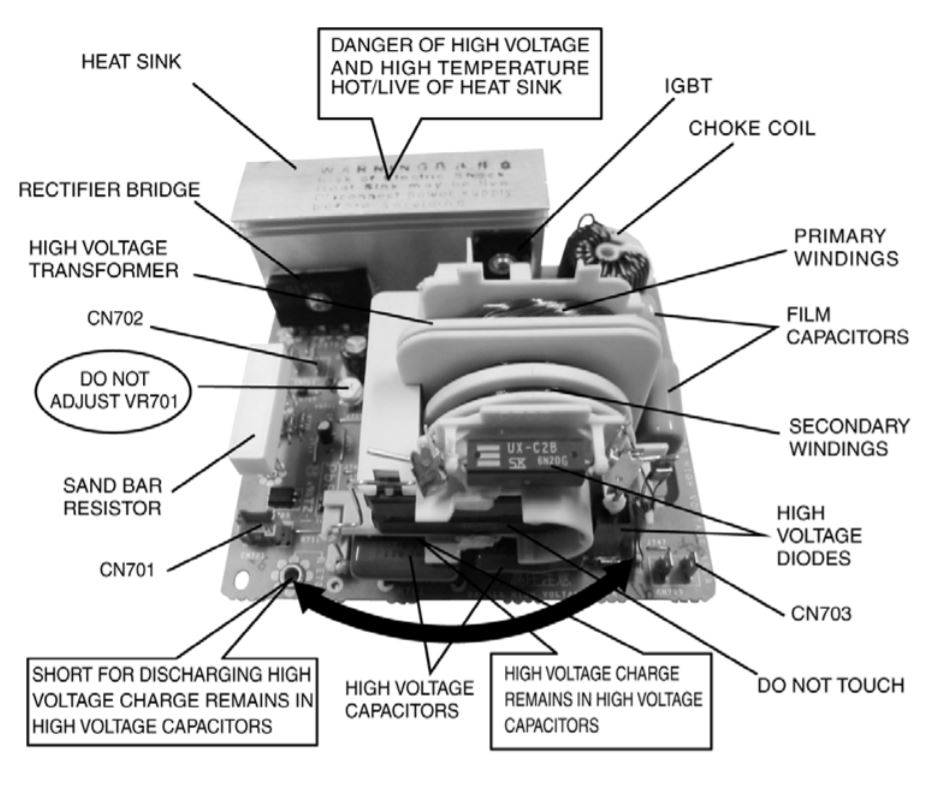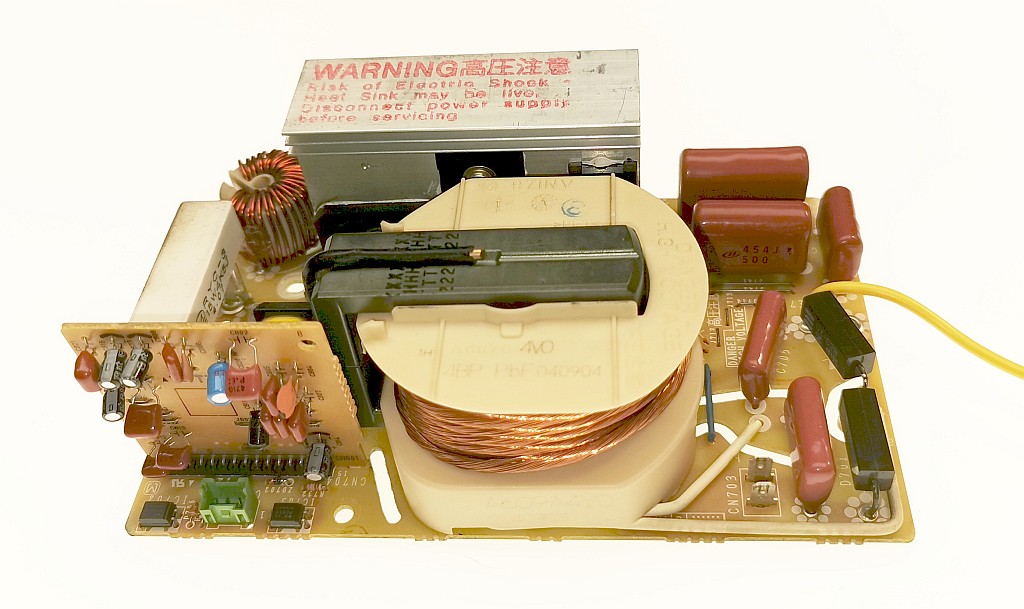How to repair the Panasonic microwave oven inverter
Why Microwave Oven Repair Is Extremely Dangerous
Before opening the oven, read this article:
https://avdweb.nl/tech-tips/electronics/microwave-oven-safety
 Electrocuted by a microwave oven
Electrocuted by a microwave oven
Panasonic microwave oven HV inverter board circuit
 Panasonic microwave HV inverter board circuit
Panasonic microwave HV inverter board circuit
Eagle circuit: Panasonic-inverter.zip
How to safely test the Panasonic microwave oven HV inverter
Here I will tell you how you can check the operation of the Panasonic HV inverter on a safe and easy way, by contactless testing by measuring the magnetic field.
 Panasonic microwave oven HV power supply
Panasonic microwave oven HV power supply
Here is another version of the Panasonic inverter:
 Panasonic Microwave Inverter A66454T07AP
Panasonic Microwave Inverter A66454T07AP
Bleeder resistor
 Panasonic 100M Ohm bleeder resistor
Panasonic 100M Ohm bleeder resistor
The 100 MΩ bleeder resistor is for safety and discharges the high-voltage capacitors after power-off. After 3 seconds, the voltage has dropped to zero, but...
Attention: If the bleeder resistor is defective, a dangerous voltage of 4000 V will remain on the output, and this deadly. Never assume the resistor is functioning correctly; always discharge the high voltage manually as described in this article. By the way, you cannot measure the 100MOhm resistor with most universal meters because they indicate infinity.
Testing
If the microwave oven doesn't work, either the microwave tube itself or the HV inverter is defect. The first test is whether the microwave tube works, here you can see that it produces light:
 Check if the microwave tube lights up
Check if the microwave tube lights up
Than, the HV inverter has to be checked. The high voltage on the circuit board is very dangerous and therefore it is safer not to carry out measurements on the circuit board itself, if it is not strictly necessary. See here how to do it:

Make a wire loop around the transformer core and connect a diode 1N4007 and resistor of 10Ω / 1W in series. If the HV inverter works well, the voltage should be:
- 1.6V with the microwave tube connected.
- 1.9V with the microwave tube disconnected.
You can also use an oscilloscope; the signals are identical with a disconnected and connected microwave:


 Panasonic microwave oven HV inverter simple circuit
Panasonic microwave oven HV inverter simple circuit
Extreme danger if the HV PSU is not grounded
The high voltage power supply must always be grounded to the chassis ground with the ground cable. If not, it may expose the user to 4000V and cause extreme DANGER!
See the Microwave oven repair safety precautions and the Panasonic safety repair rules.
A lightweight switching power supply of 2000W/kg
The Panasonic microwave oven HV inverter is a remarkable design, because it is a half-bridge converter of 1000W with a low weight of just 470g. That is much lower than other supplies with the same power. Because, I wanted to develop a lightweight battery charger for electric bicycles, I wanted to know if it would be possible to build a battery charger in the same way as the Panasonic HV inverter, so with the same low weight.
Note, that battery chargers are allowed to have a lot of output ripple, in contrast to switching power supplies, where the output voltage must be clean. The same is the case with a microwave oven, it doesn’t matter if the high voltage has lot of ripple. Therefore, the Panasonic HV inverter can be made simple and lightweight because no additional chokes are needed for filtering.
For the reason mentioned above, I bought a Panasonic microwave oven HV inverter and re-engineered it.


